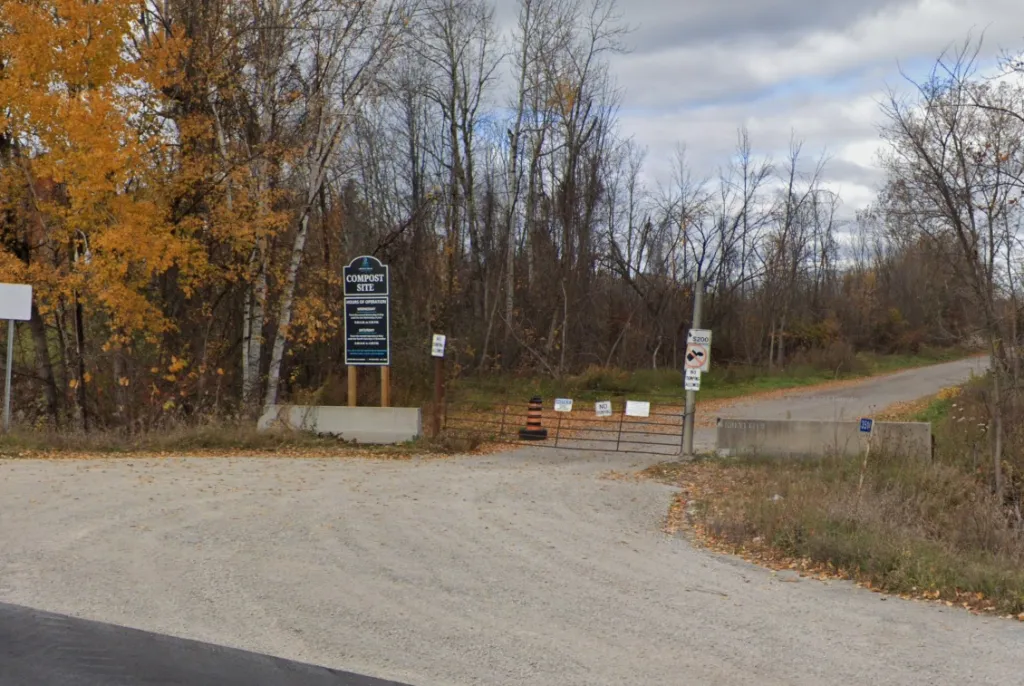SMITHS FALLS — The public debate over contamination at the town’s compost site escalated Monday after Mayor Shawn Pankow publicly reassured residents that Smiths Falls drinking water is safe, only to be challenged hours later by local resident Nathaniel Morris, who says the mayor’s statement misrepresents the province’s order for a full delineation study.
In a detailed post on his mayoral Facebook page on Oct. 2, Pankow said “suggestions being circulated on social media” that toxins are migrating from the Highway 43 compost site into the Smiths Falls drinking water system are “false and unwarranted.”
“The town’s drinking water is safe,” the mayor wrote. “Although rigorous environmental testing identified the presence of cadmium, lead and zinc in soil, and traces of petroleum hydrocarbons and polycyclic aromatic hydrocarbons in groundwater, a professional geoscientist has confirmed none of this has migrated from the compost site.”
Pankow said the town hired Russell Chown, P.Geo., of RLC-HydroG, to prepare a 13-page technical review memorandum addressing environmental impacts, contaminant hydrogeology and impact delineation. The report, released October 1, concludes the site is suitable for use as a compost facility, compliant with the source-water protection plan, and poses no significant risk to drinking water.
The mayor emphasized that the review found contaminants in soil and overburden groundwater were “limited and localized,” and that delineation at the site “is considered adequate.”
Background: What’s at issue
The Highway 43 compost site sits within the Smiths Falls drinking water protection zone and borders a wetland to the east. A delineation study is a mapping process used in environmental investigations to determine how far contamination has spread through soil and groundwater and whether it is moving toward nearby wetlands or water sources.

The Ministry of the Environment, Conservation and Parks (MECP) ordered the town to complete such a study on Nov. 14, 2024, after elevated levels of metals and hydrocarbons were detected during March 2024 testing.
According to the town’s consultant, sampling included test pitting, drilling, soil and groundwater testing, installation of monitoring wells and surface-water sampling. The review concludes impacts are “limited and localized,” and that the site remains appropriate for composting if managed according to best practices.
Morris disagrees. He maintains the data show eastward drainage toward the wetland, which he says has never been directly tested.
Morris calls for full delineation
In his email of Oct. 6, Morris said the “partial delineation study” completed Oct. 1 did not confirm whether contamination is migrating into the wetlands, nor did it identify the source. He attached a slide deck outlining what he described as “remaining delineation work,” and asked council to instruct its consultant to complete that testing “as soon as possible.”
“The assurances that contamination is not migrating into the wetlands were not based on any actual testing of the wetlands,” he wrote. “Since these were the two stated objectives of the delineation study, additional work is still required.”
Mayor rebuts claim over Smiths Falls drinking water safety
Within two hours, Pankow responded, copying councillors, media, and the consultant, saying Morris had “misunderstood” his Facebook post.
“To confirm, I have not indicated that the town will be completing a delineation study,” he wrote. “Your public comments indicating such are incorrect and misleading.”
The mayor said RLC-HydroG’s work fulfills the town’s obligations, adding that the only further requirement is annual testing and reporting to the Ministry of the Environment, Conservation and Parks to ensure Smiths Falls drinking water continues to meet safety standards..
“Mr. Chown’s report clearly confirms the work completed to date fulfills all requirements and that there is no risk to our drinking water,” Pankow said.
Ongoing divide and what’s next
The MECP has not yet confirmed whether the Oct. 1 technical review satisfies its 2024 delineation order.
Pankow maintains the town’s obligations are complete aside from routine monitoring. Morris argues that until the wetlands are tested and the contamination source identified, the study remains unfinished.
“We are not going to stop asking for a proper delineation study, one that identifies the source of the contamination and tests whether it has migrated into the wetlands, until such a study is completed,” he said. “That is the only responsible position to take on this issue.”
Keep connected to your community—Read the latest Smiths Falls news.
Related Resources: Smiths Falls drinking water reports and publications.
Related Article: Buried deteriorated vessels dug up near Smiths Falls compost site



